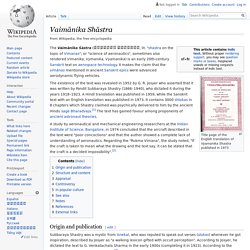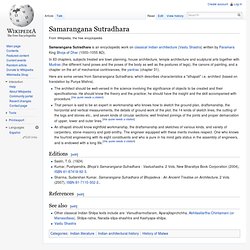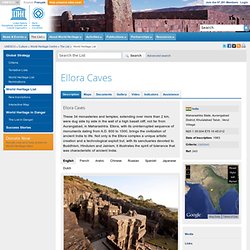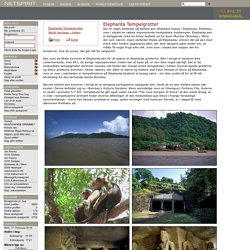

Project Madurai. It was the Pandyan Kings during their long reigning period, who set up Sangams (academies) for the encouragement and criticism of Tamil Studies. The Sangam period lasting for several centuries, is considered universally as the Golden Age of Tamil Literature. Great anthologies such as Ettuthohai and Pattupattu were compiled and many immortals like Iraiyanar, Valluvar, Kapilar, Nakkirar, Paranar, Auvaiyar and Ilango Adigal gave their best to the Tamil Muse. The proposed electronic text archive project devoted to tamil literature is named after this great historic city Madurai. Vaimanika Shastra. Title page of the English translation of Vyamanika Shastra published in 1973 The Vaimānika Śāstra (वैमानिक शास्त्र, lit.

"shastra on the topic of Vimanas"; or "science of aeronautics", sometimes also rendered Vimanika, Vymanika, Vyamanika) is an early 20th-century Sanskrit text on aerospace technology. It makes the claim that the vimānas mentioned in ancient Sanskrit epics were advanced aerodynamic flying vehicles. The existence of the text was revealed in 1952 by G.
R. A study by aeronautical and mechanical engineering researchers at the Indian Institute of Science, Bangalore, in 1974 concluded that the aircraft described in the text were "poor concoctions" and that the author showed a complete lack of understanding of aeronautics. Origin and publication[edit] Subbaraya Shastry was a mystic from Anekal, who was reputed to speak out verses (slokas) whenever he got inspiration, described by Josyer as "a walking lexicon gifted with occult perception". Mr. Structure and content[edit] J. Temple Mural Paintings of Tamilnadu, India. Our aim in making these pages online is to represent and illustrate work that involves many people, organisations and locations, and the scope of the work, covered under what we call “Nayaka* Painting Archival Project”. The actual size of the mural featured above is 17’ x 6.7’. It was photographed in 39 parts and digitally stitched for museum quality reproduction at actual size of 61200 pixels x 24000 pixels at 300 dpi.
You are seeing it at a pixel dimension of 630 x 250, medium quality jpeg, 72 dpi. The black gap in the painting is a wooden pillar against the wall. The pillar is left out of the digital stitch. This mural is in the first tier of a temple tower of five tiers with 30 such walls in all, in a tiny village in the far south called Tiruppuṭaimarutūr in Thirunelveli District, Tamilnadu. Murals like these are found on the walls and ceilings of many temples all over India, though our work is confined to the state borders of Tamilnadu.
August 2006. Cover. Samarangana Sutradhara. Samarangana Sutradhara is an encyclopedic work on classical Indian architecture (Vastu Shastra) written by Paramara King Bhoja of Dhar (1000–1055 AD).

In 83 chapters, subjects treated are town planning, house architecture, temple architecture and sculptural arts together with Mudras (the different hand poses and the poses of the body as well as the postures of legs), the canons of painting, and a chapter on the art of mechanical contrivances, the yantras (chapter 31). Here are some verses from Samarangana Sutradhara, which describes characteristics a "sthapati" i.e. architect (based on translation by Punya Mishra). The architect should be well-versed in the science involving the significance of objects to be created and their specificationss. He should know the theory and the practice; he should have the insight and the skill accompanied with procedure. Editions[edit] References[edit] See also[edit] THE GREAT STUPA AT NAGARJUNAKONDA IN SOUTHERN INDIA.
Mahabalipuram. Mahabalipuram Byen Mahabalipuram (Mamallapuram) blev grundlagt af de første tamilske konger og fungerede som hovedstad i kongeriget Pallava fra det 5. til det 8. århundrede. Den gamle by rummer et væld af smukke bygningsværker fra den tid. Det berømteste er et vejrbidt kysttempel (Shore Temple), som er på Unescos liste over bevaringsværdige bygninger.
Ellora Caves. Ellora Caves These 34 monasteries and temples, extending over more than 2 km, were dug side by side in the wall of a high basalt cliff, not far from Aurangabad, in Maharashtra.

Ellora, with its uninterrupted sequence of monuments dating from A.D. 600 to 1000, brings the civilization of ancient India to life. Not only is the Ellora complex a unique artistic creation and a technological exploit but, with its sanctuaries devoted to Buddhism, Hinduism and Jainism, it illustrates the spirit of tolerance that was characteristic of ancient India. Grottes d'Ellora Trente-quatre monastères et temples ont été creusés en succession serrée dans la paroi d'une haute falaise basaltique, non loin d'Aurangabad, contribuant à faire revivre une brillante civilisation ancienne dans une séquence ininterrompue de monuments datables de 600 à 1000. كُهف إلورا source: UNESCO/ERI. Somnathpur - Kesava Temple—Photo Gallery. Elephanta Tempelgrotter. Der er ingen elefanter på Elefant øen (Elephant Island / Elephanta, Elefanta), men i stedet en række imponerende hinduistiske huletempler.

Elephanta øen er beliggende cirka en times sejllads ud fra byen Mumbai (Bombay). Mens der som nævnt, ingen elefanter findes på Elephanta, vrimler det på øen med mere eller mindre aggressive aber, der ikke længere pænt beder om, at måtte få noget frugt eller slik, men som i stedet blot napper det fra turisterne, hvis de synes, det går lidt for langsomt! Det, som de fleste kommer til Elephanta øen for at opleve er Elephanta grotterne.
Øen i øvrigt er bestemt ikke ucharmerende, men ifh.t. de øvrige rejseoplevelser Indien har at byde på, er den ikke noget særligt. Det er de hinduistiske tempelgrotter derimod.